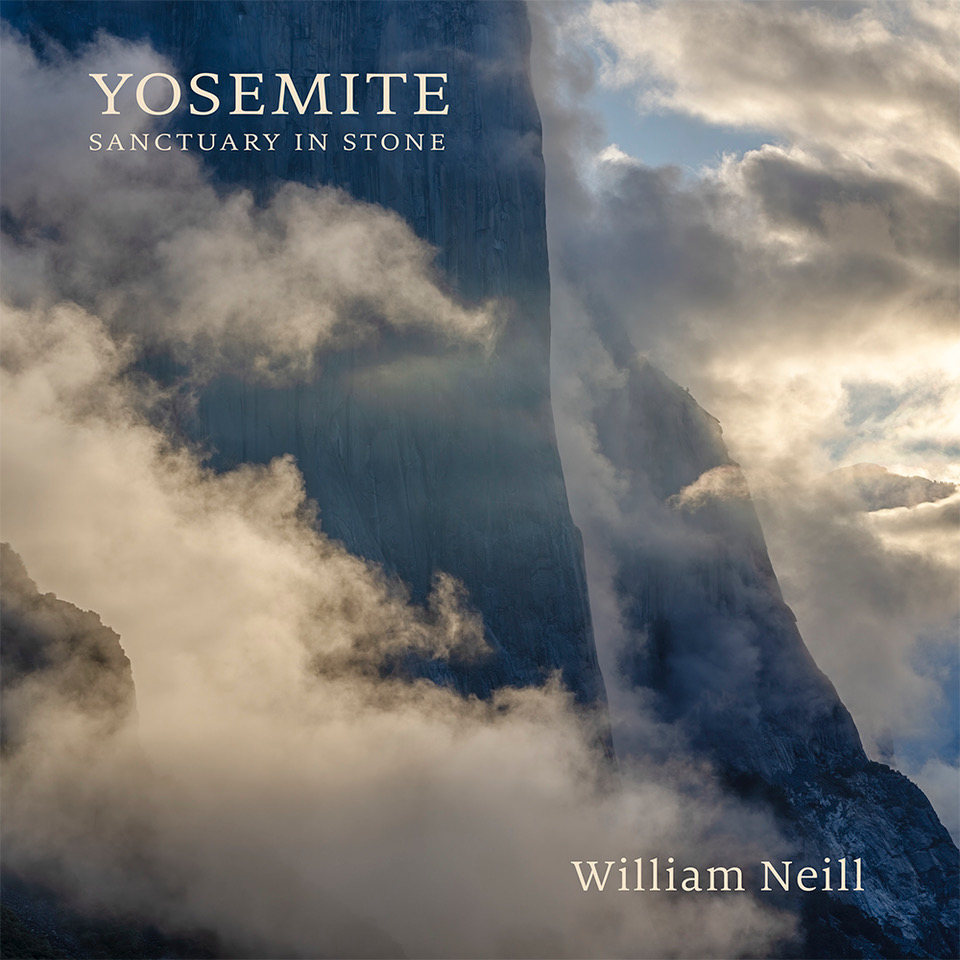 .
.
William Neill
 .
.
View 12 Great Photographs By William Neill.
Visit the artist’s website here.
William Neill, a resident of the Yosemite National Park area since 1977, is a landscape photographer concerned with conveying the deep, spiritual beauty he sees and feels in Nature. Neill’s award-winning photography has been widely published in books, magazines, calendars, posters, and his limited-edition prints have been collected and exhibited in museums and galleries nationally, including the Museum of Fine Art Boston, Santa Barbara Museum of Art, The Vernon Collection, and The Polaroid Collection. Neill received a BA degree in Environmental Conservation at the University of Colorado. In 1995, Neill received the Sierra Club’s Ansel Adams Award for conservation photography.
Neill’s assignment and published credits include National Geographic, Smithsonian, Natural History, National Wildlife, Conde Nast Traveler, Gentlemen’s Quarterly, Travel and Leisure, Wilderness, Sunset, Sierra and Outside magazines. Also, he writes a regular column, On Landscape, for Outdoor Photographer magazine. His many books include Landscapes Of The Spirit and Yosemite: Sanctuary In Stone.
What’s the best thing about photography?
Seeking beauty daily. Connecting others to what I saw and felt.
What’s the worst thing about photography?
#1: Business, #2: Self-Promotion, #3: Worrying about money
What’s the thing that interests you most about photography?
Engaging with Nature
What’s the thing that interests you most about your own photographs?
Reconnecting myself with experiences and the sense of wonder for what I discovered.
What’s the thing that interests you most about other people’s photographs?
Seeing/Feeling what they discovered.
Who were your early photographic influences?
Minor White, Wynn Bullock, Eliot Porter, Brett Weston, Paul Caponigro, Jerry Uelsmann, Philip Hyde, Ansel Adams
Who are your photographic influences now?
Bruce Percy, Michael Kenna, and a whole group of young landscape photographers making find work who I see mostly in Instagram.
Who were your early non-photographic influences?
Artists: Monet, Van Gogh, Bierstadt, O’Keefe, Obata
Authors: John Steinbeck, Edward Abbey, John Muir
Who are your non-photographic influences now?
Same as above …
What’s the most inspiring work of art you saw recently?
Works by Bruce Percy, TJ Thorne, Alex Noriega, Guy Tal, Alister Benn
What’s the best thing about gear?
Not thinking about it, recording what I love. When it expands my options for interpretation.
What’s the worst thing about gear?
The cost, the maintenance and when I can’t figure out/remember how to resolve an idea.
How do you know when an image doesn’t work?
When it doesn’t stick in my memory, when the image’s tonal balance, lighting condition, or graphics doesn’t reflect my experience. Or when I recognize that the composition doesn’t live up to my experience.
How do you know when an image is good?
When the image reconnects me with inspiration I felt. When the way I resolved the moment of exposure in terms of light and design holds up over time.
How do you know when an image is great?
If an image of mine is great? I let others decide that judgment! More broadly, a great image resonates inside my core.
What’s the most useful photographic mantra?
Simplify. Slow down. Trust your instincts.
Do you practice another art form? (If so, which?)
No, I seem to only have the bandwidth for spending time with my family and my photography.
What benefits do you get from (this/these) other art form/s?
When I was a boy on a family vacation to the Grand Tetons, my father had the radio on the local classical music station. As we drove into the park, already excited to see the high peak, we came around a bend to see the mountains framed before us. At that moment, the radio was playing Mussorgsky’s “The Great Gate of Kiev,” a brass musical fanfare that majestically announced our arrival and amplified our wonder at the view.
Which was the most important image to you that got away?
If I am moved by a subject, then that memory, that experience is part of me whether I make a successful image of it or not. I can’t think of any image that I saw in my mind, that haunts me. Perhaps a short memory is an effective tool for moving forward, as can be the internalizing an experience with no goal/success expectation.
What failure did you learn the most from?
I don’t think in terms of failures, as every experience should be seen as a lesson. As the Joni Mitchel song goes, “…life is for learning.”
What accomplishment are you most proud of?
To have stayed excited and engaged with the beauty of nature for five decades, to have shared that connection with many other who tell how I’ve inspired them. It is an honor to have enriched someone else’s life. To have books of my work that future photographers might enjoy.
What’s the thing you most hope to accomplish?
To pass on my love for life, especially the powerful beauty of the natural world, to my children and to anyone who connects with my imagery.
If you had to do it all over again, what would you change?
Nothing. I feel blessed to be living a life so many dream of: Doing what I love.
If you had another life to live a completely different life, what would you choose to do?
Graphic design, book design
What are the most important questions to you?
I have to admit I read how other photographers on your Q&A page answered this question. But before I did, my first response was the same: WHY? Why use a camera for self-expression? Why commune with nature? Why explore the world, other cultures, and other landscapes? Why share my art?